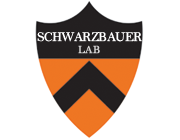The Caenorhabditis elegans homologue of the extracellular calcium binding protein SPARC/osteonectin affects nematode body morphology and mobility.
Type
The extracellular matrix-associated protein, SPARC (osteonectin [Secreted Protein Acidic and Rich in Cysteine]), modulates cell adhesion and induces a change in cell morphology. SPARC expression in mammals is developmentally regulated and is highest at sites of extracellular matrix assembly and remodeling such as parietal endoderm and bone. We have isolated cDNA and genomic DNA clones encoding the Caenorhabditis elegans homologue of SPARC. The gene organization is highly conserved, and the proteins encoded by mouse, human, and nematode genes are about 38% identical. SPARC consists of four domains (I-IV) based on predicted secondary structure. Using bacterial fusion proteins containing nematode domain I or the domain IV EF-hand motif, we show that, like the mammalian proteins, both domains bind calcium. In transgenic nematodes expressing a SPARC-lacZ fusion gene, beta-galactosidase staining accumulated in a striated pattern in the more heavily stained muscle cells along the body. Comparison of the pattern of transgene expression to unc-54-lacZ animals demonstrated that SPARC is expressed by body wall and sex muscle cells. Appropriate levels of SPARC are essential for normal C. elegans development and muscle function. Transgenic nematodes overexpressing the wild-type SPARC gene were abnormal. Embryos were deformed, and adult hermaphrodites had vulval protrusions and an uncoordinated (Unc) phenotype with reduced mobility and paralysis.

